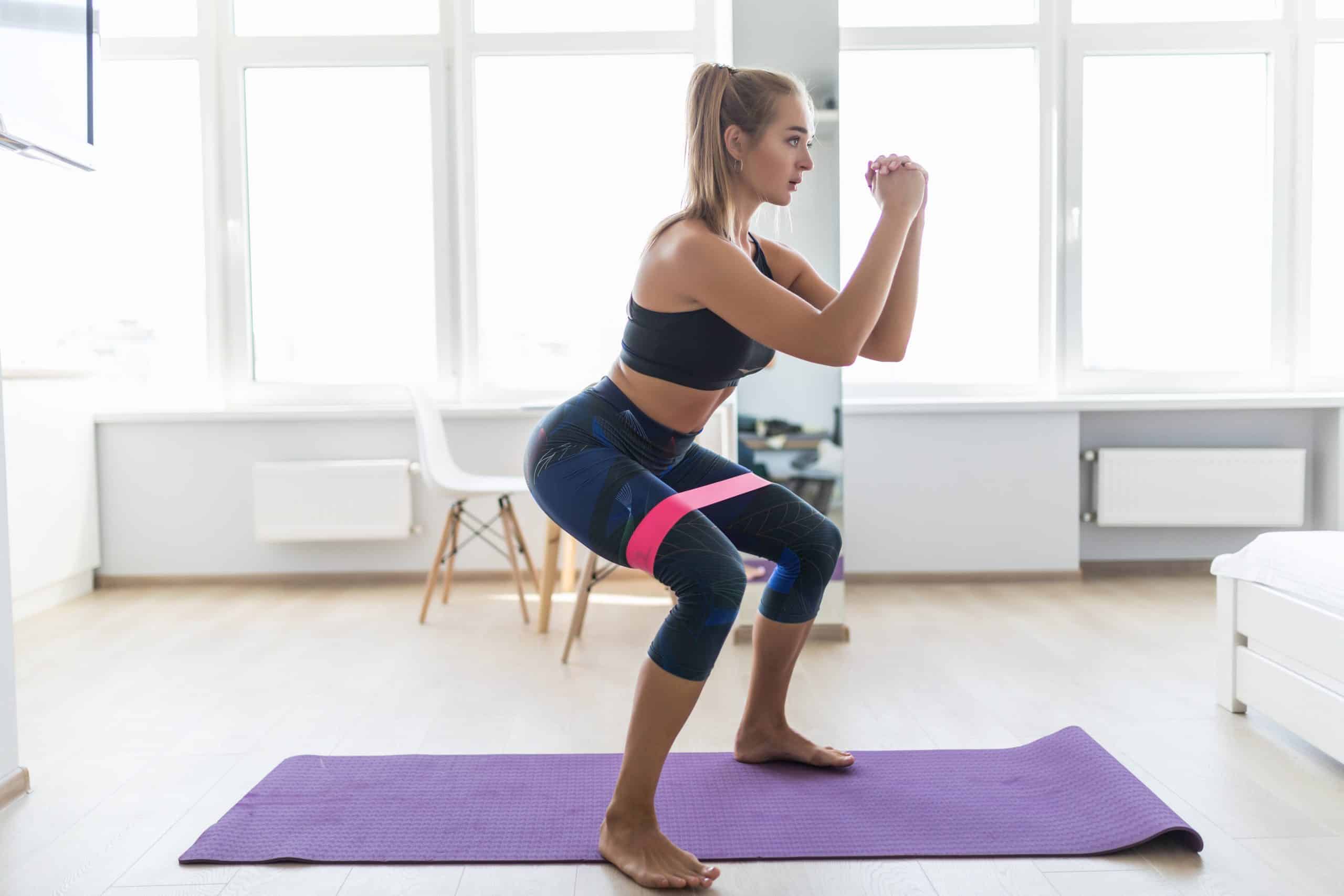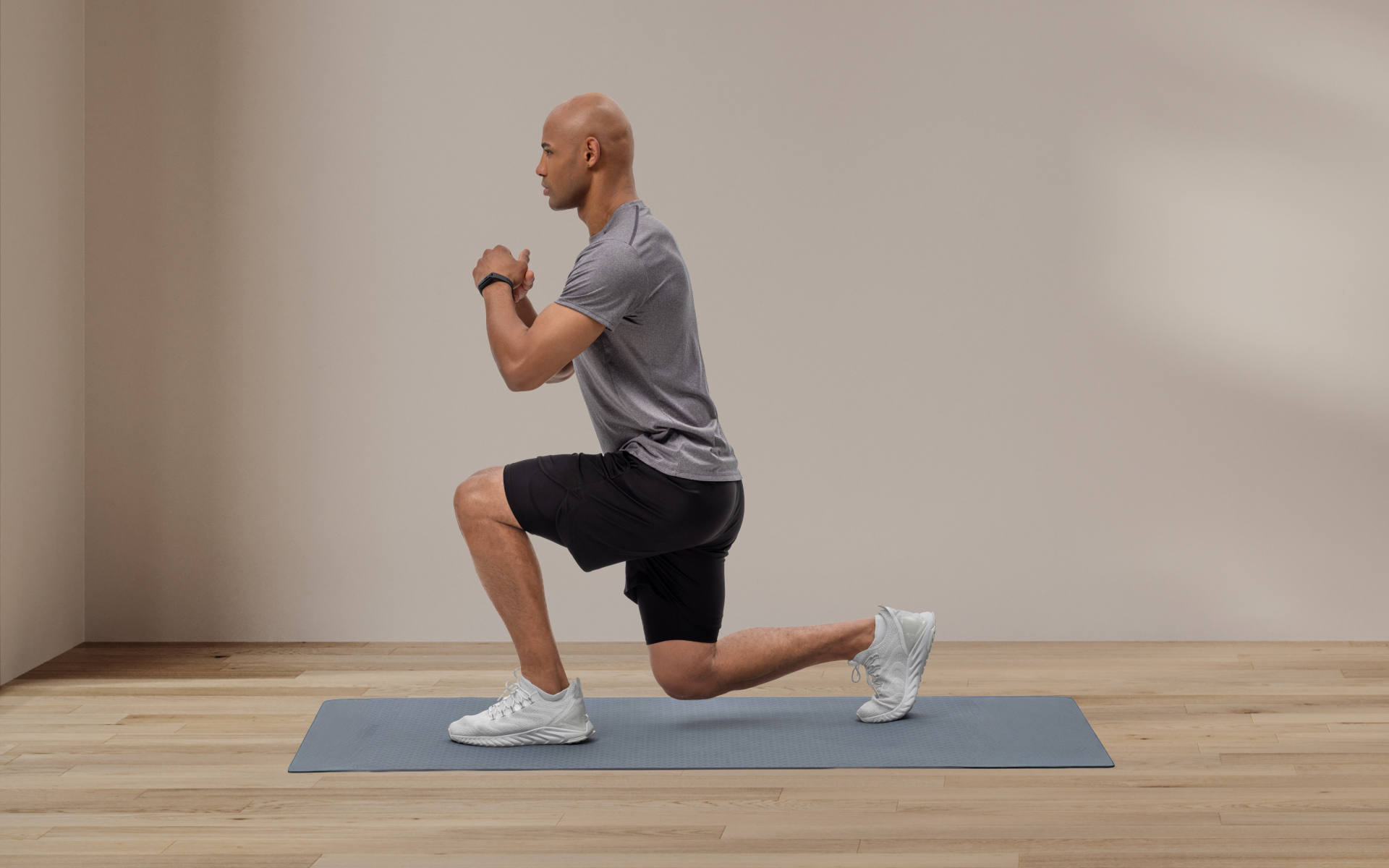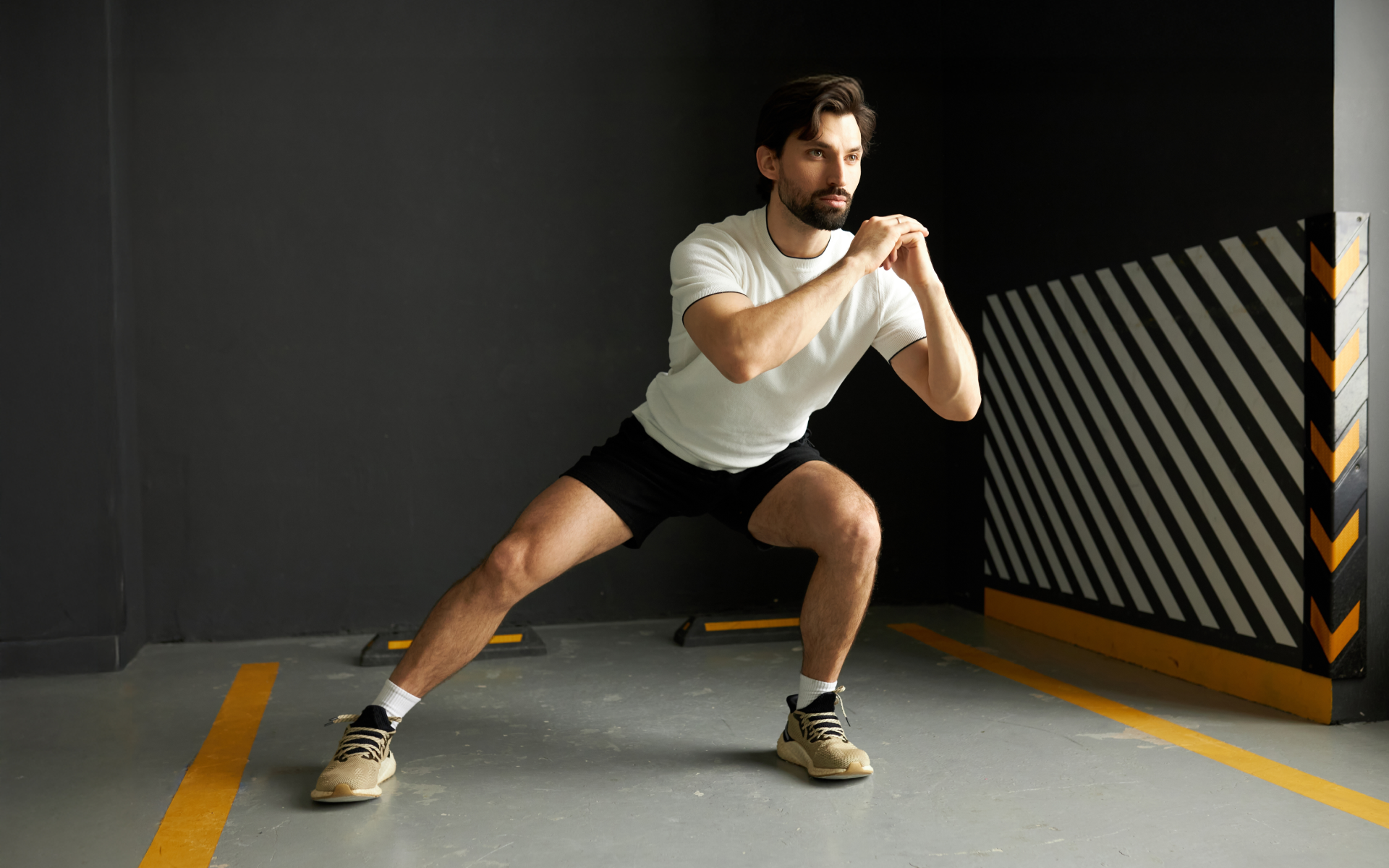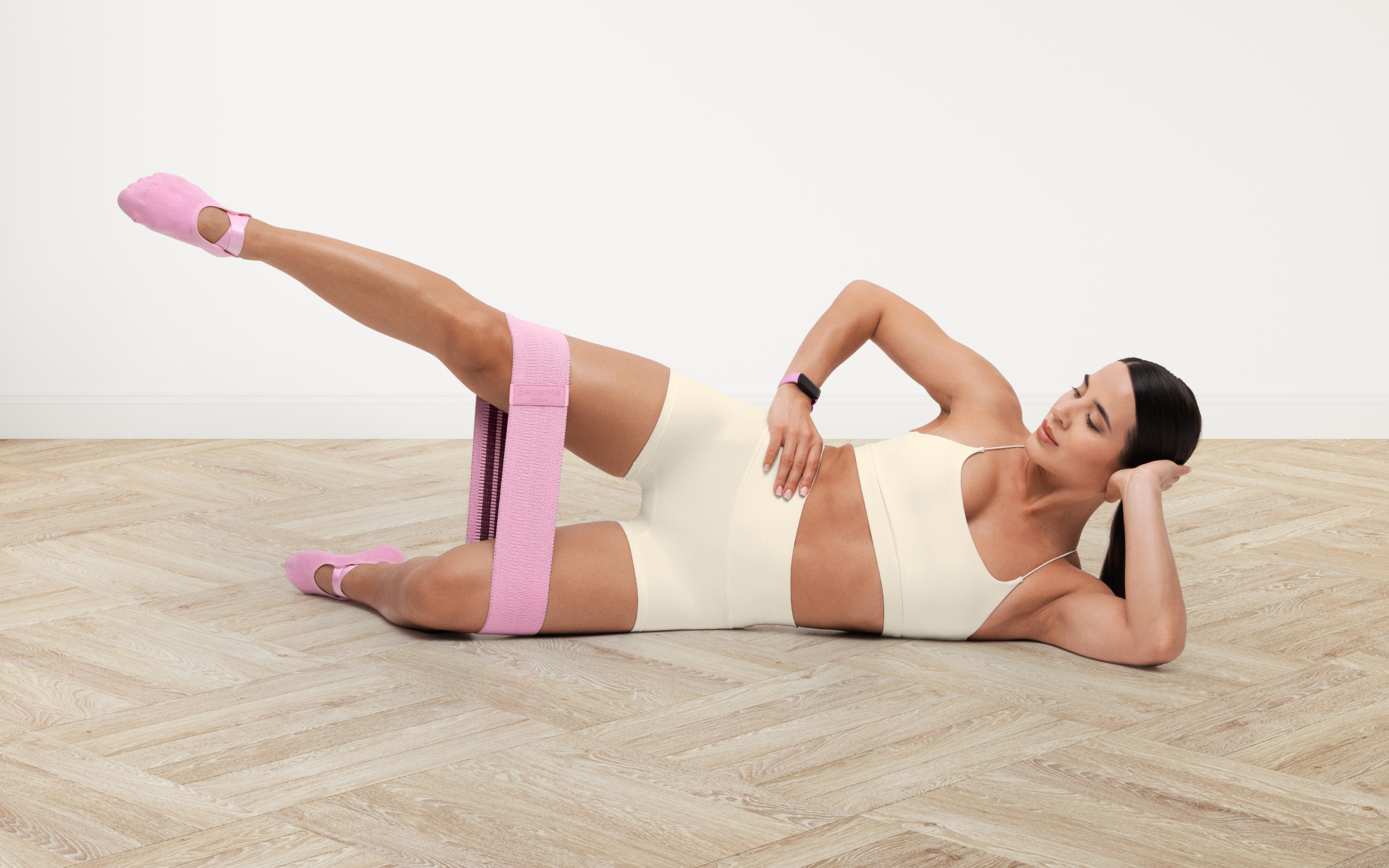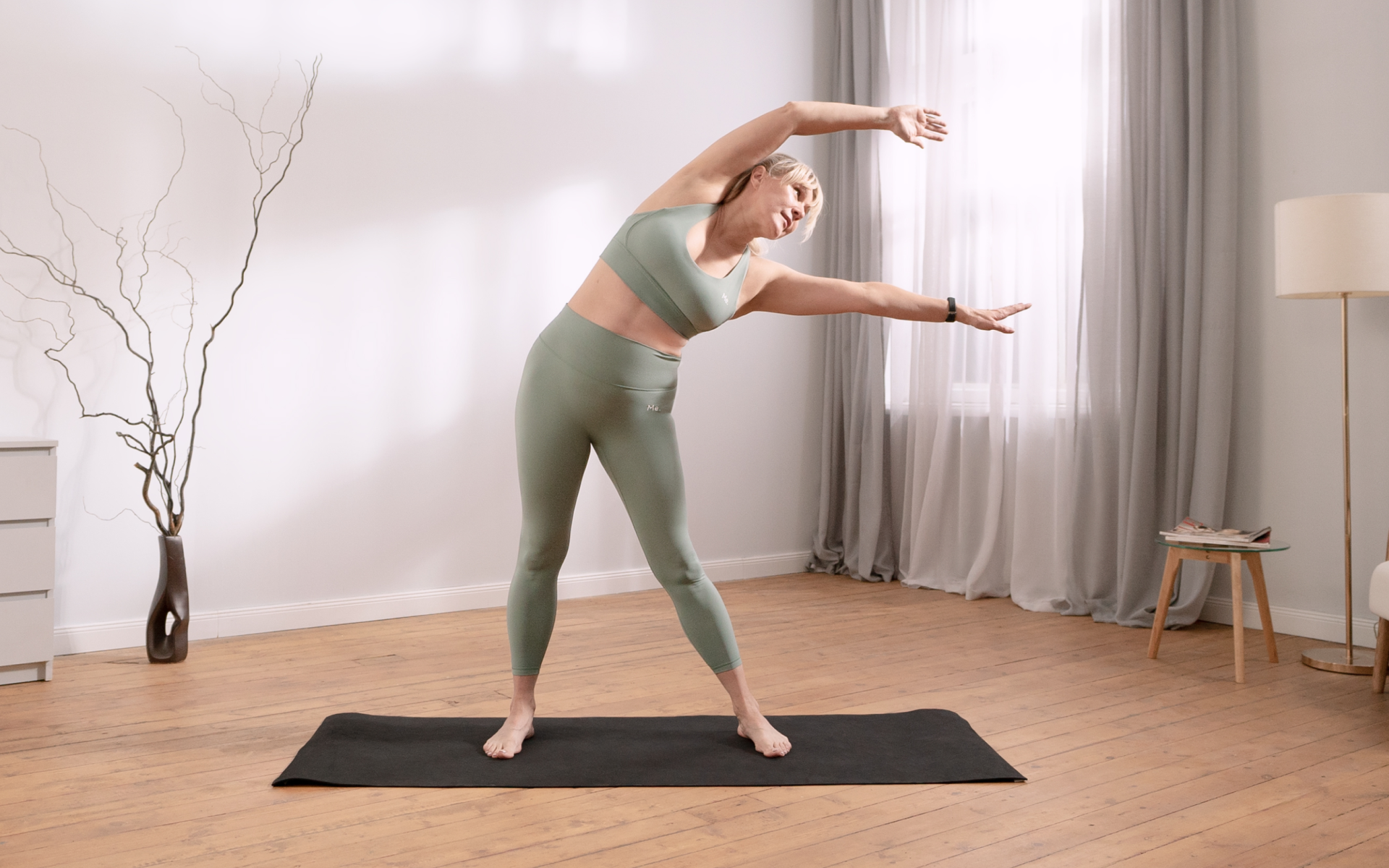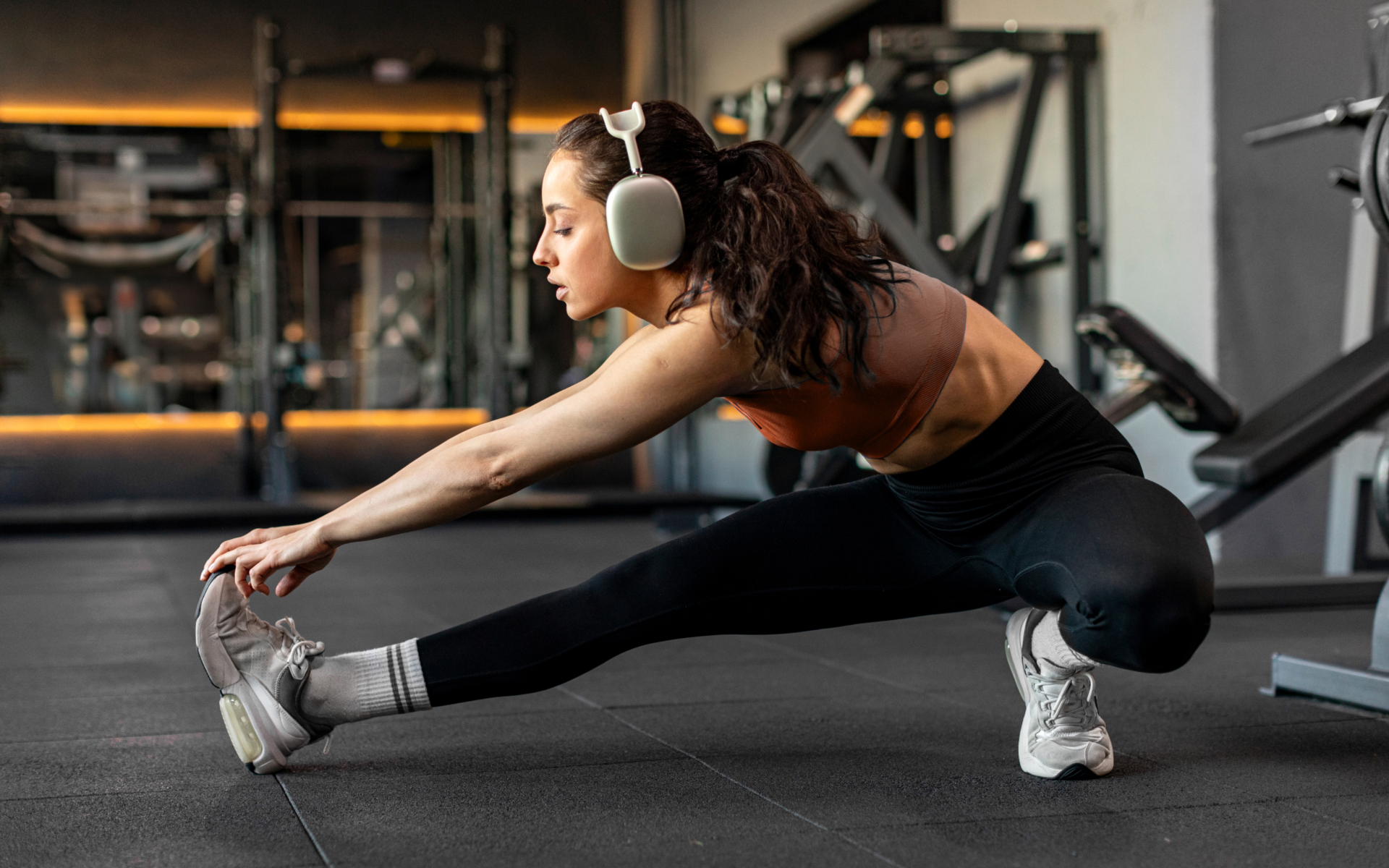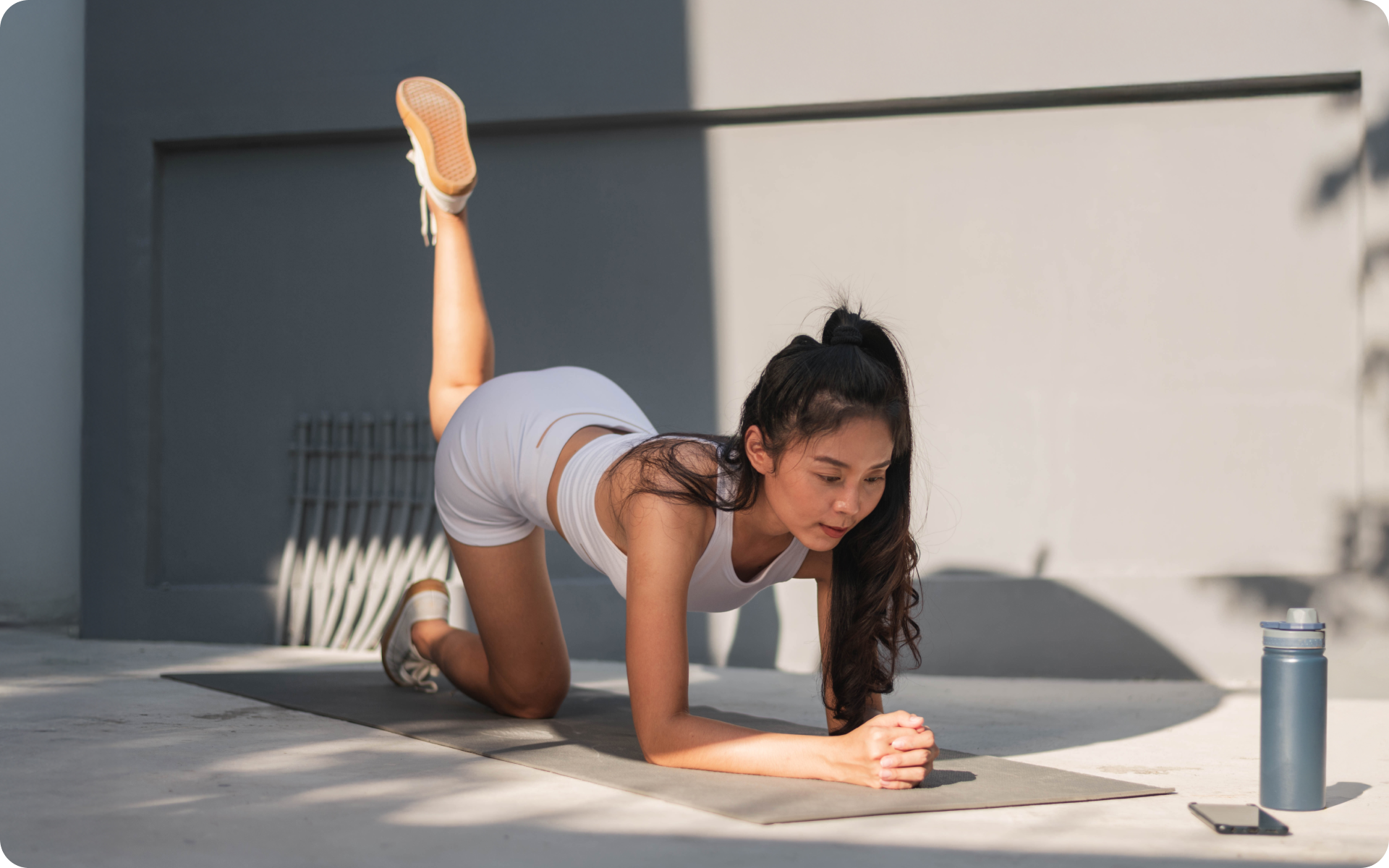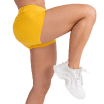Leg day, some people hate it and would do anything to avoid it, while others love it and prefer training legs multiple times a week. Regardless of which end of the spectrum you find yourself on, there is no doubt that training legs is an important part of any fitness routine that is worth its salt.
When looking up leg workouts for mass, most of the videos you come across usually show a variation of workouts, all that require gym machinery and weights. But what if you cannot afford to or simply do not have the time or access to a gym? What then?
If this has been your struggle, then you are in the right place. Read on to learn more about how to create the best body weight leg workout that can not only be done at home, but one that can also help you achieve those gains that you’ve always wished for!
What Is The Best Bodyweight Leg Workout?
The best bodyweight workout for mass and even strength is one that applies the principle of progressive overload. When applying this principle to your workout, you are typically required to overtime, increase your load – usually through the use of heavier weights – during your workouts (1).
By doing this, you are constantly putting your muscles under stress, which not only helps to prevent plateauing, but also helps the muscles to grow bigger and stronger (1). But what happens if you are trying to create a bodyweight leg workout at home and want to build massive legs without the use of weights?
If you’ve mustered up the courage to crush your weight loss goal, let BetterMe take the sting out of this demanding process. Our app will help you restructure your habits, remold your life and crank up your fitness results!
Can You Build Leg Muscle Without Heavy Weights?
Yes, you can. Thankfully, progressive overload isn’t only achieved through the increase of weights over time. Here are some ways to have the best bodyweight leg workout-no equipment routine and still use progressive overload for massive gains (1, 2, 3)
Increase The Number Of Reps
The concept of progressive overload simply means to constantly challenge yourself and your muscles over time. If weights are not available to you, you can challenge your muscles by upping the number of repetitions you do in a set. For example, if you usually do 3 sets of squats with 10 squat reps per set, increase this to 12 or even 15 reps per set. This moves your total number of squats from 30 to 36/45.
Increase The Number Of Sets
This can be done in one of two ways
- Increasing the number of sets per exercise without necessarily increasing the number of reps per set. I.e., if you were doing 3 sets of reverse lunges with 12 reps per set, up the number to 4 sets with 12 reps per set
- Increasing both the number of reps and sets which takes things up a notch and is even more challenging. For example if you had been doing 3 sets of jump squats with 8 reps per set, increase it to 4 reps of jump squats with 10 reps per set
Decrease The Rest Period Between Sets
This pushes the workout from being a traditional workout to something similar to a HIIT workout. The reduced rest time not only means that your cardiovascular system gets in a bit of a workout, but it keeps your muscles engaged throughout which could tire them out even faster, which may mean more muscle growth after rest and a good diet.
Increase The Length Of Your Workout Sessions
If you only workout for 20 minutes a day, push it to 30 or 40 minutes a day. This can be done through simply:
- Increasing the reps or sets per workout – which means the routine takes longer to complete
- Doing your workouts slower – Instead of rushing through the workouts do the movements slower which can allow more strain on the muscle and even further ensure that you are using the correct form.
- Increase the number of exercises done in a session – If you were only doing 3 sets of 3 bodyweight leg exercises per session, add two more exercises and do 3 sets of each. This increases both the training duration and the strain to the muscles.
Read more: Pilates for Legs: 8 Must-Have Exercises for Lean, Toned Limbs
Can You Build Legs With Bodyweight Exercises?
Yes, you can. When thinking about gains, most people usually ignore bodyweight workouts and instead opt for gym exercises with free weights or gym machinery because they believe that the former will not give them their desired results. This, however, could not be further from the truth.
Recent studies have shown that bodyweight workouts can help build muscle in the same way that using weights can
- In a study published in the Experimental Physiology journal, researchers took 37 individuals all aged between 30 and 64 years, divided them into two groups and had them workout for 8 weeks.
The 1st group was assigned to do full-body free weight resistance exercises and the second group was required to only do full-body body mass-based resistance exercises.
After 8 weeks of working out (twice a week) the researchers found that the subjects in both groups showed a significant increase in their muscle cross-sectional area (simply meaning that the muscles got bigger) with a slightly bigger change seen in the body mass-based resistance group. Changes in fat loss were also compared with the body-weight exercise group showing a significant decrease as compared to the free weight group (4).
- In another study published in Nature, researchers took 13 young women who lead a sedentary lifestyle, divided them into two groups and had them exercise twice a week for 6 weeks.
The first group was assigned progressive bodyweight workouts consisting of 10 levels of movements and the second group did barbell squats. Researchers wanted to compare how these exercises would affect the women’s muscle strength, muscle thickness and their body fat percentage.
At the end of the six weeks, researchers found that all the women showed significant increases in their muscle strength and thickness with no significant differences seen in both groups. In terms of body fat, however, the women in the barbell group showed a significant decrease as compared to the progressive body weight group (5).
This goes to show that you can build legs through bodyweight exercises and while free weights and machinery are a good addition, they are not necessary to help you achieve massive gains.
BetterMe will keep you laser-focused on your weight loss journey! Nutrient-packed meal plans, fat-blasting workouts, galvanizing challenges and much more. Try using the app and see for yourself!
How To Exercise Your Legs Without Weights
Okay, now that you know that you can indeed tone and build up your leg muscles with bodyweight exercises, how do you go about doing so? The easiest way to do this would be to quickly look up ‘best bodyweight leg workout at home’ and the search results will give you a number of pre-made routines to choose from.
However, if you’d like to make a routine that works specifically for you, your goals and your lifestyle, here are some things to consider:
Your Lifestyle
What does your everyday life look like? We all have different lifestyles and responsibilities which means that we cannot all dedicate the same time to a workout session every day. Some people prefer indoor workouts while others like to venture into the outdoors. Or maybe you work on your feet all day long rather than sitting down in an office chair. Finding what works for you and your lifestyle will be the best way to see long term results.
To ensure that you have a higher chance of sticking to your leg workout routine and seeing it through, make sure that you come up with a schedule that fits into your already established lifestyle.
Your Goals
Some people want massive gains that could possibly rival a bodybuilder and others simply want to strengthen the muscles and tone them a bit. These two people will likely not have the same routine. Take a look at what you’d like your final results to look like and then look for a routine that fits that. You should also use the concept of progressive overload to help you achieve said goals
Start Slowly & Think About Your Current Fitness Ability
Just because you are doing bodyweight leg exercises doesn’t mean that you have to jump in head first and include almost every workout in your routine. While bodyweight workouts are typically safer than weighted exercises, (especially for beginners) due to the fact that you are not using an external load to complete the exercises. But this still doesn’t mean that there is zero risk of injury.
Overworking your muscles does not only lead to pain after the session – overdoing anything can have adverse effects that are not good for your health. Instead of attempting to do every available workout, start small. Choose 3 to 5 different workouts and work on these. Once you have mastered them, then you can move on to more complex moves.
Also remember to choose exercises that are within your capabilities. If you are a beginner, start with beginner leg exercises. Work on them as you aim to move up to the intermediate level. Note that pushing yourself up a level too fast, too soon will only increase your risk of injury, which may push you back to step one.
Finally, ensure that you are using proper form with each exercise that you choose. It is much safer to complete the workout correctly than it is to get as many reps as you possibly can. An injury will set back your fitness goals, so completing everything with proper form is essential for long lasting results.
Read more: Wall Pilates for Thighs – Your Guide to Toned and Sculpted Legs!
How To Get Massive Legs: Body Weight Exercises For Beginners
Now that we have that out of the way, here is a list of simple exercises that you can use for a quick but effective 30 minute bodyweight leg workout. Feel free to pick and choose what you like from this list. Remember, it is best to start with compound movements and then go into isolation exercises. For example, ideally you will want to do a bodyweight squat first and then transition into single leg lunges afterwards.
- Walking lunges – 3 sets x 10 reps
- Bodyweight/Air squats – 3 sets x 12 reps
- Wall sit – Hold for 1 to 2 minutes
- Step ups (use a box, bench, couch, or stair step) – 3 sets x 10 reps per leg
- Jump Squats – 3 sets x 8 reps
- Glute bridges – 3 sets x 10 reps
- Calf raises – 3 sets x 12 reps
- Donkey kicks – 2 sets x 15 reps per leg
- Bulgarian Split Squats – 3 sets x 8 reps
- Reverse Lunges – 3 sets x 12 reps per leg
Please note that you can also do these leg workouts at home with weights if you have access to them. If you choose to use weights during your session, please be sure to use weights that you can handle.
Choosing something too heavy only leads to injury. But on the other hand, make sure you are also not using something too light. If the goal is hypertrophy, the weights used must be something that progressively challenges you in order to properly work the muscle.
What Is The Most Effective Bodyweight Leg Workout?
Unfortunately, there is no one single exercise that beats out all the rest to claim the title of being the ultimate and best bodyweight leg workout. All lower body exercises matter and when done together, give the best results.
With that in mind, the most effective bodyweight workout is a routine with varied exercises to help hit all the muscles in the lower body from the glutes to the calves and even the ankles and feet. Ideally this plan will work your lower body in different planes of motion. For example, don’t only focus on forward lunges, do some lateral lunges too. This is one of the best ways to build functional strength which can help you complete everyday tasks.
Remember that when starting, just pick 3 to 5 exercises from the list above and use those for your leg day workouts. Practice progressive overload with them and when you feel that your body has become used to the same 3 to 5 exercises, switch to something different.
Can I Train Legs Everyday?
No, you should not. You may think that training legs everyday will lead to better results but nothing could be further from the truth.
In our opinion, the ideal number of times that you can train a muscle group is about twice a week and not on consecutive days. Working a muscle group everyday can lead to overtraining which weakens the muscle in question, which over time can lead to a higher risk of injury.
Please note that overtraining doesn’t just affect the muscle group in question. Failure to get ample rest after a workout (at least 24 to 48 hours of uninterrupted rest of said muscles) can lead to reduced performance, depressed mood, central fatigue, insomnia, irritability, weight loss, anxiety, mental fog and more (6).
FAQs
Do You Need To Train Legs Heavy?
As mentioned above, using heavy weight can certainly help with lower body muscle hypertrophy and strength but heavy weights are not the only thing that will help with this. Bodyweight workouts, especially those that apply the principle of progressive overload through increased reps, sets, or even duration of workout will have similar results.
But ultimately, your goals will determine how heavy you need to go on these exercises. If you are just hoping to improve your lower body strength and work on functional fitness, then it is not necessary to try to set a personal record for a back squat. The focus should more so be on completing exercises with proper form and in multiple planes of motion.
Can You Get Huge Legs Without Heavy Weights?
Yes, you can. Studies have shown that bodyweight training elicits the same results in muscle thickness and strength as traditional weight lifting does (5, 7).
Is 3 Leg Days Too Much?
Generally, most people train a specific muscle group twice a week but in some cases others can push it up to three times a week (8). If you think that you can train legs three times a week and still have enough time to rest those muscles, thus avoiding overtraining, then you can go ahead and do it.
However, remember that research shows that training a muscle group multiple times a week generally doesn’t have a significant effect on the muscles as simply training it once a week – especially if the routine done on said days is the same (8, 9, 10).
Is It OK To Never Train Legs?
No, it’s not. Doing so only leads to muscle imbalances which can lead to an imbalanced appearance but it can also lead to impaired functionality. Don’t just train legs either. Your weekly workout routine should work all the muscles in your body from the upper body and back, to the core, glutes and other leg muscles.
Should I Do Deadlift On Leg Day?
Yes, you absolutely can deadlift on leg day. Research shows that deadlifts are just as good as squats specifically in regard to improving lower body maximal strength and jump performance (11).
The Bottom Line
The best bodyweight leg workout has less to do with the kind of lower body exercises done and more with how you do said exercises and if you are actively and constantly challenging your muscles during the workouts. As mentioned before, be sure to include progressive overload in your routine and use proper form. Results take time, but as you stay consistent, you will see changes and should be injury free. Remember to also rest and focus on your daily caloric intake to help boost your muscle mass!
DISCLAIMER:
This article is intended for general informational purposes only and does not serve to address individual circumstances. It is not a substitute for professional advice or help and should not be relied on for making any kind of decision-making. Any action taken as a direct or indirect result of the information in this article is entirely at your own risk and is your sole responsibility.
BetterMe, its content staff, and its medical advisors accept no responsibility for inaccuracies, errors, misstatements, inconsistencies, or omissions and specifically disclaim any liability, loss or risk, personal, professional or otherwise, which may be incurred as a consequence, directly or indirectly, of the use and/or application of any content.
You should always seek the advice of your physician or other qualified health provider with any questions you may have regarding a medical condition or your specific situation. Never disregard professional medical advice or delay seeking it because of BetterMe content. If you suspect or think you may have a medical emergency, call your doctor.
SOURCES
- Progressive overload without progressing load? The effects of load or repetition progression on muscular adaptations (2020, ncbi.nlm.nih.gov)
- Improving muscle size with Weider’s principle of progressive overload in non-performance athletes (2021, researchgate.net)
- Resistance Training Variables for Optimization of Muscle Hypertrophy: An Umbrella Review (2022, frontiersin.org)
- Effects of free weight and body mass-based resistance training on thigh muscle size, strength and intramuscular fat in healthy young and middle-aged individuals (2023, pubmed.ncbi.nlm.nih.gov)
- Effects of progressive body-weight versus barbell back squat training on strength, hypertrophy and body fat among sedentary young women (2023, nature.com)
- Overtraining Syndrome (2012, ncbi.nlm.nih.gov)
- Effect of Progressive Calisthenic Push-up Training on Muscle Strength and Thickness (2018, pubmed.ncbi.nlm.nih.gov)
- How many times per week should a muscle be trained to maximize muscle hypertrophy? A systematic review and meta-analysis of studies examining the effects of resistance training frequency (2019, pubmed.ncbi.nlm.nih.gov)
- Comparison of once‐weekly and twice‐weekly strength training in older adults (2007, ncbi.nlm.nih.gov)
- Effects of once- versus twice-weekly eccentric resistance training on muscular function and structure in older adults: a randomised controlled trial (2024, nature.com)
- A Comparison Between the Squat and the Deadlift for Lower Body Strength and Power Training (2020, ncbi.nlm.nih.gov)
